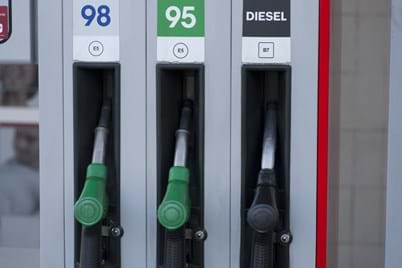If you haven’t flinched at fluctuating food prices or increasing interest rates, perhaps you've felt the pinch at the petrol pump when fuel reached its highest price since September 2008, when average prices peaked at $2.06 per litre at points over the past 12 months.
To help soften the blow of increased petrol prices the Federal Government earlier in the year reduced the fuel excise (taxes) charged on each litre of fuel sold in Australia by just over 22c. It was a move to help lower petrol prices for consumers amid other rising costs of living. However the fuel excise discounts recently ended (on September 29) and while the full effects of the reinstated fuel excise are yet to be felt, it is good to brace for higher petrol prices over the coming weeks and months.
With a number of forces at play influencing the rise and fall of fuel prices in an industry not regulated in Australia, how do we steer our own petrol expenditure downwards? While you can’t control the price at the pump, there are a number of ways to curb the costs of your own car’s running costs. Here are a few steps you can take to drive down your own fuel usage and keep your petrol bill manageable.
1. Seek savings with a fuel app
 Not all petrol stations charge the same amount per litre and prices change from week to week. As part of its role as national consumer and competition watchdog, the ACCC monitors fuel prices. According to the ACCC fuel prices can vary between 50-80 cents per litre so it’s worth doing your research. Independent fuel retailers can sometimes be more competitive than the larger petrol station chains, and prices also vary from suburb to suburb.
Not all petrol stations charge the same amount per litre and prices change from week to week. As part of its role as national consumer and competition watchdog, the ACCC monitors fuel prices. According to the ACCC fuel prices can vary between 50-80 cents per litre so it’s worth doing your research. Independent fuel retailers can sometimes be more competitive than the larger petrol station chains, and prices also vary from suburb to suburb.
There are several free apps available that help you as a consumer to monitor fuel prices. Some are run by your local state or territory government, such as FuelCheck (NSW), while others rely on crowdsourcing, meaning the information is based on motorists submitting data. Some states require petrol stations to submit their prices to a database, but other states such as Victoria and the ACT don’t have these rules so crowdsourcing apps are actually the only way to keep track of fluctuating prices in those states.
Choice has reviewed the various fuel apps available in each state and territory so this is a good place to start if seeking an app which is reliable and easy to use.
2. Shop when the cycle is low
Petrol prices are determined by the market and are not static, instead they are cyclical, meaning they move up and down in regular patterns depending on where they are in their cycle. Petrol price cycles are the result of pricing policies of petrol retailers, not from changes in the wholesale cost of fuel. The best day to buy fuel is when the price cycle is at a low point.
The ACCC provides charts and buying tips for each major city. The charts are updated daily and show average daily prices for the last 45 days. You can get an idea of where the cycle prices are in your own city by tracking the cycles and using charts and buying tips provided by the ACCC.
3. Try eco driving
 Eco Driving reduces fuel usage by changing the way you drive. Research by the RACQ (Royal Automobile Club of Queensland) suggests Eco Driving could save you up to 15% or as much as $400 per year (based on an unleaded petrol price of $2 per litre).
Eco Driving reduces fuel usage by changing the way you drive. Research by the RACQ (Royal Automobile Club of Queensland) suggests Eco Driving could save you up to 15% or as much as $400 per year (based on an unleaded petrol price of $2 per litre).
Below are some ways to implement these changes into your daily travel.
- Plan your trips carefully to avoid excess time on the road. Pick a day to get all your errands in the same local area done in one outing. You’ll reduce your fuel consumption and you’ll also save yourself some time. Map out where your local supermarket, butchers, library, dry cleaners etc. is and see how you can maximise your travel time to cover your destinations in one go. Find a shorter (and ideally less congested route) to help reduce the amount of time you are consuming fuel. According to Choice cars can use up to 20% more fuel when the engine is cold, so it counts to make the most of being in your car and ticking off several of your errands during the one outing.
- Avoid peak hour traffic. Simply because you’ll likely be stuck in traffic for longer and therefore churn through more of your fuel. When in heavy traffic accelerate gently and avoid harsh breaking by always ensuring at least a three second gap between the car in front and behind. If you do encounter traffic jams and are waiting for long periods between moving, turn off the engine rather than leaving the engine to idle (though many newer models now do this automatically). Choice also recommends avoiding ‘over-revving’ if driving a manual as this can increase fuel consumption, and for automatic vehicles it’s best to “ease back slightly on the accelerator once the car gathers momentum.”
- Go for the cheapest fuel your car can safely use. Car Expert recommends swapping to a lower octane ‘entry level’ fuel if your car is manufactured to operate on the more basic unleaded fuel. “In instances where your vehicle is manufactured to work on 91RON fuel and you have regularly been filling up with 95 or 98RON fuel, it’s safe to switch back to 91RON.” However, they are careful to clarify, “if you drive a vehicle that requires 95RON or 98RON as a minimum, you shouldn’t switch to a lower quality fuel. You can cause long term damage to your engine.”
- Look after your car. Ensure your vehicle is up to date with maintenance to ensure your car is running as efficiently as it can. Regularly service your car to help minimise its emissions. Believe it or not, your tyres also impact your fuel usage. According to Car Expert, under-inflated tyres can not only make your car handle poorly, but they also cause your car to use more fuel to overcome the “extra rolling resistance of under-inflated tyres”. The recommended interval between tyre checks is six months.
- Don’t be conned into aircon. According to Choice air con uses up to 10% more fuel. If travelling under 80km per hour, open the windows instead, recommends Choice, however if travelling faster speeds it’s better to opt for air con due to increased drag caused by open windows at higher speeds.
- Lose some kilos. We all have a few random things rolling around our car boot, but if it’s more than ‘a few’ consider removing any unnecessary objects from your vehicle, as extra weight does actually impact your fuel economy. According to Car Expert, every 50kg of unnecessary weight allegedly contributes to up to $100 worth of fuel expenditure over 12 months. This includes items such as unnecessary roof racks and roof pods which add weight and ‘drag’ (which impacts the aerodynamics of a vehicle).
 Perhaps the solution is to just not use your car as much. Consider instead the possibility of walking, riding a bike or taking public transport. Pretty obvious right? But walking to the corner store or catching a train to visit a friend rather than driving might not be an option you usually consider. It can take a bit of a mind shift to open up to the idea of doing things differently. Try committing to not using your car one day a week if possible (or make it fortnightly if that feels like a stretch) and swap up a regular short drive for a walk/commute instead. Try this on the weekends initially when time and traffic are less of a stress. Before you know it, you might find yourself commuting a few times a week.
Perhaps the solution is to just not use your car as much. Consider instead the possibility of walking, riding a bike or taking public transport. Pretty obvious right? But walking to the corner store or catching a train to visit a friend rather than driving might not be an option you usually consider. It can take a bit of a mind shift to open up to the idea of doing things differently. Try committing to not using your car one day a week if possible (or make it fortnightly if that feels like a stretch) and swap up a regular short drive for a walk/commute instead. Try this on the weekends initially when time and traffic are less of a stress. Before you know it, you might find yourself commuting a few times a week.
Driving less may not only save you some money, it might also benefit your nervous system, help the environment and give you more incidental exercise.
Perhaps you’ll actually enjoy having some downtime while travelling as a passenger instead of having to be focused and alert. It may end up becoming cherished ‘you’ time where you read a book or just stare out the window and enjoy a much needed ‘brain break’. They say change is as good as a holiday, what can you change up in your routine so you are using your car less each week?

Alison Gallagher is a freelance writer, resourcefulness expert, entrepreneur and mother of two young children. She has been featured in various publications including Stellar Magazine, Australian Health and Fitness Magazine, and Cleo Magazine. Alison is particularly passionate about sharing practical tips on how to live simply, sustainably and seasonally.






